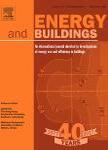版权所有:内蒙古大学图书馆 技术提供:维普资讯• 智图
内蒙古自治区呼和浩特市赛罕区大学西街235号 邮编: 010021

作者机构:Univ Castilla La Mancha 3D Visual Comp & Robot Lab E-13071 Ciudad Real Spain Univ Castilla La Mancha Civil Engn & Construct Dept E-13071 Ciudad Real Spain
出 版 物:《ENERGY AND BUILDINGS》 (能源与建筑物)
年 卷 期:2022年第274卷
核心收录:
学科分类:0820[工学-石油与天然气工程] 08[工学] 0813[工学-建筑学] 0814[工学-土木工程]
基 金:Ministerio de Ciencia e Innovación, MICINN, (PID2019-108271RB-C31, PROYECTO/AEI/10.13039/501100011033) European Regional Development Fund, ERDF, (SBPLY/19/180501/ct)
主 题:Thermal point clouds Building energy model Infrared thermography 3D Data processing Building information modelling
摘 要:New methodologies that explore and identify energy problems of buildings can be defined by using three-dimensional thermal models over time. The acquisition of thermal point clouds is the primary link in a chain that ends with a semantic Building Information Model (BIM) that contains energetic parame-ters. This literature review attempts to outline the current state of the art as regards the most important stages in this path by discussing the topics of thermal point cloud acquisition systems, 3D thermal semantic models, exportation to thermal models and the current applications of thermal point clouds in Architecture, Engineering and Construction. Special mention is made of the limitations and gaps in each stage. As a summary, it can be stated that only simple thermal BIM models of single constructive elements have been defined to date, and that a long path must be followed in order to automatically obtain a thermal BIM model of a multi-story building. (c) 2022 Elsevier B.V. All rights reserved.